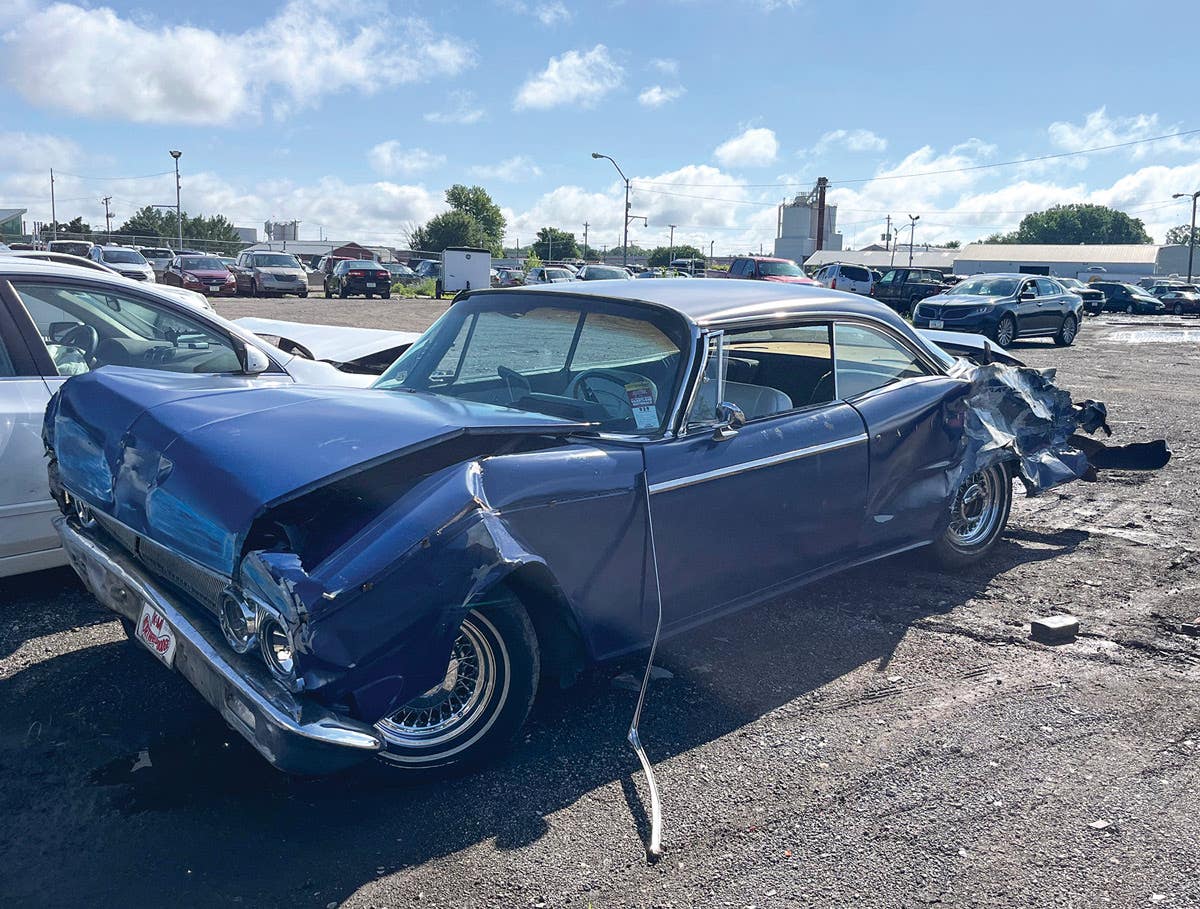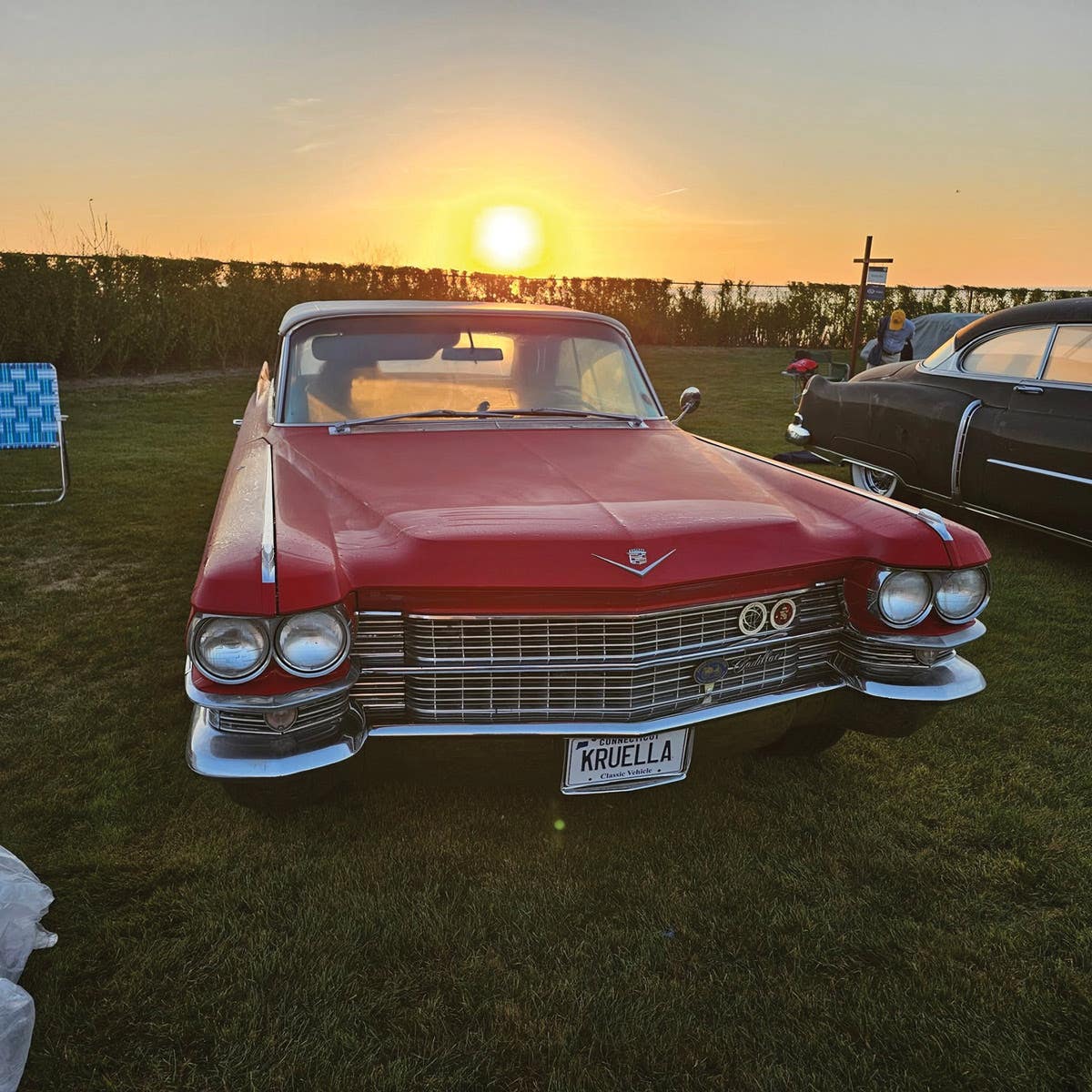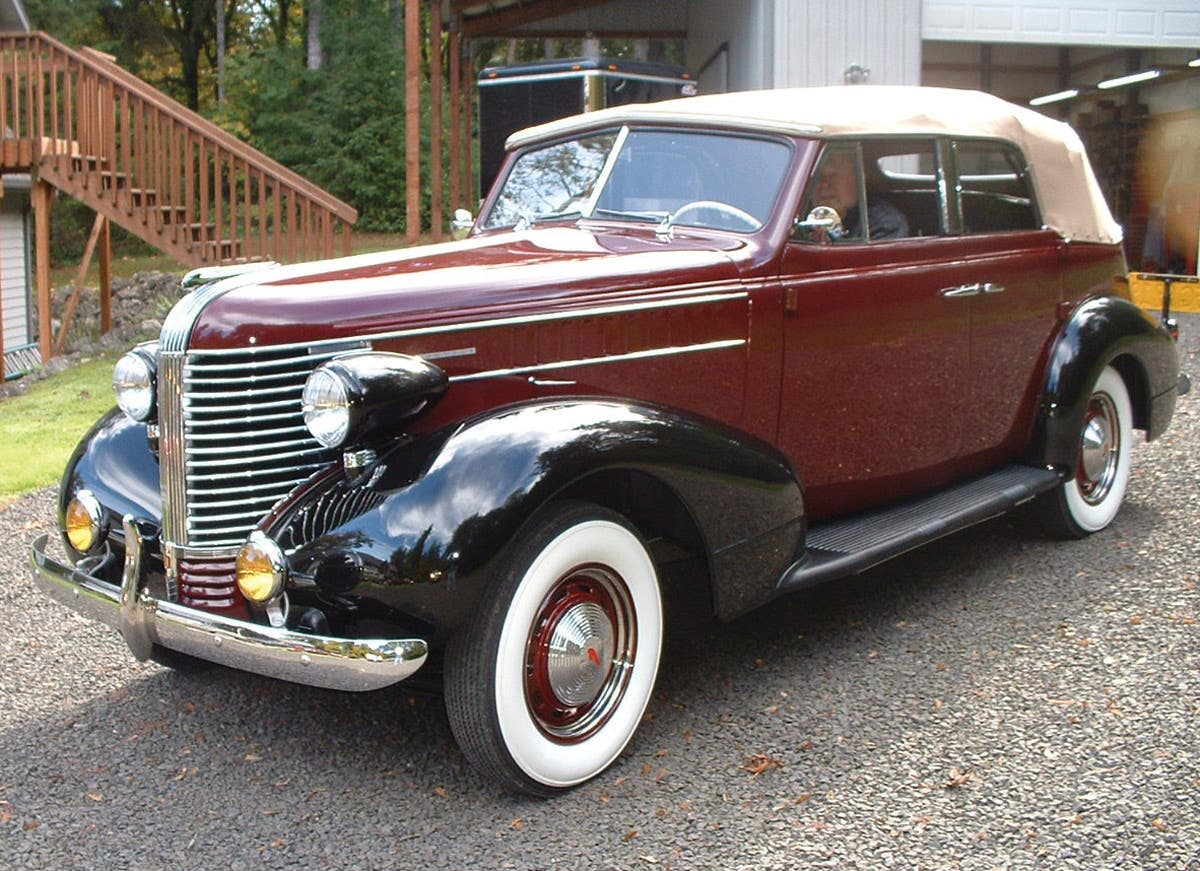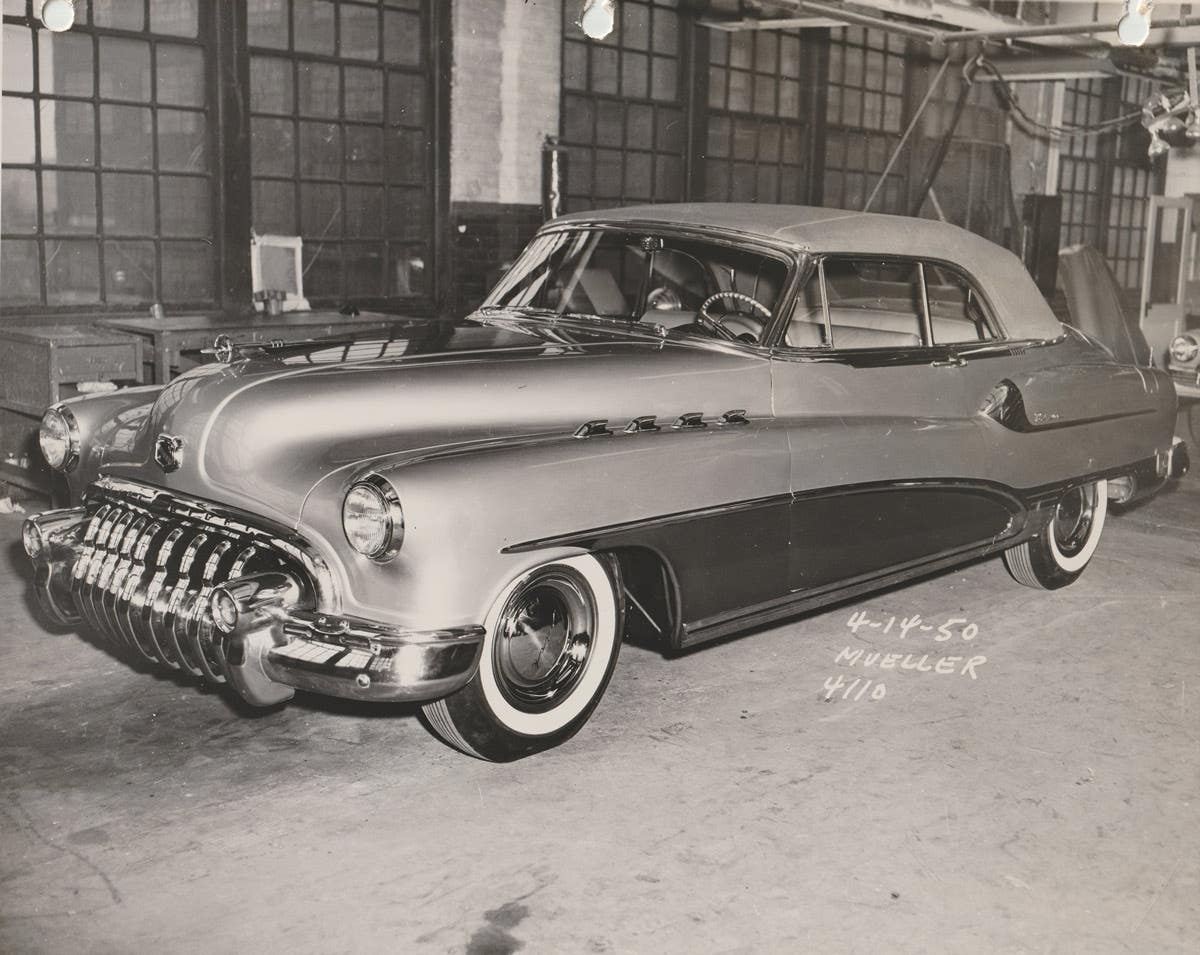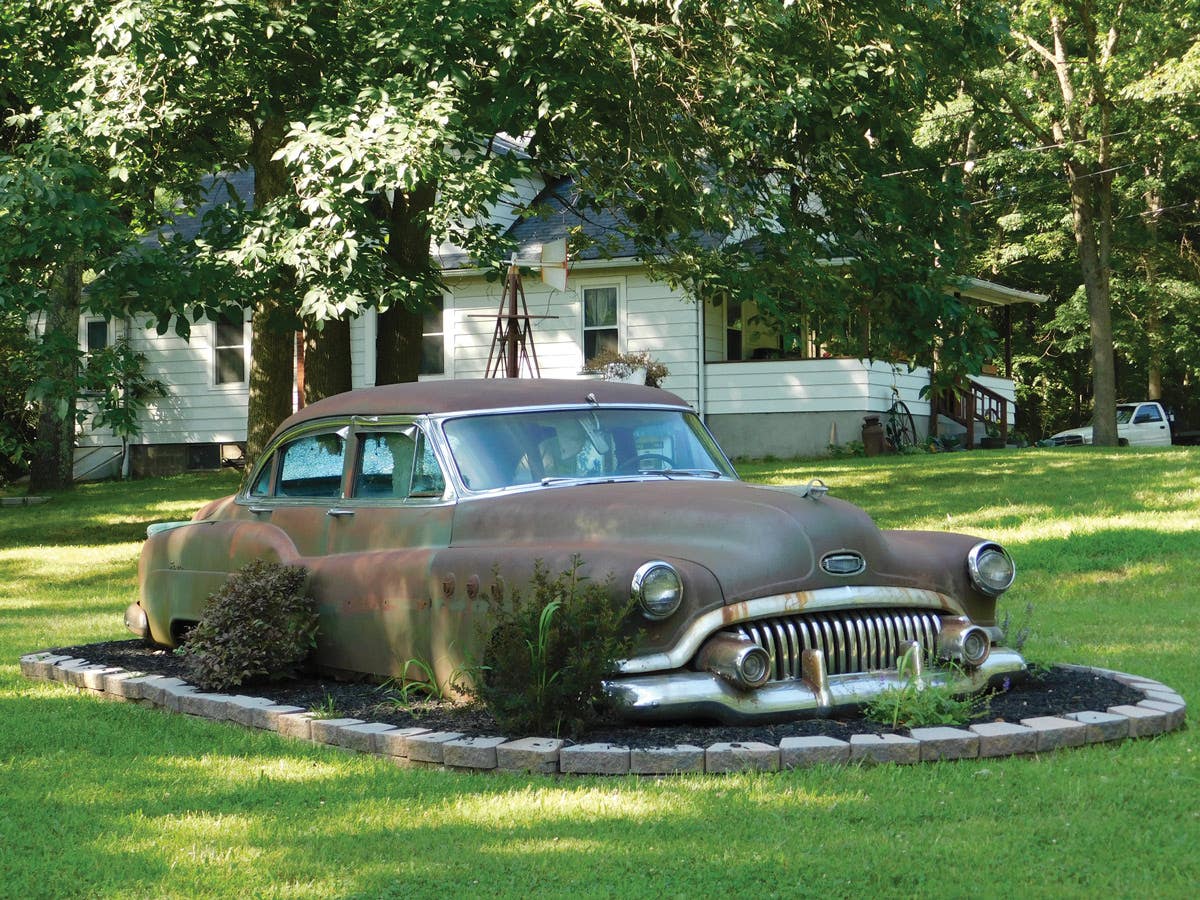Gordon Buehrig’s wife, Kay Buehrig, bought him this 1971 Corvette. Freeze Frame Image LLC
The T-Top is a beautiful example of compromise. If you want the open-air fun of a convertible, but don’t want the body flex, draftiness and added weight of a droptop, then the T-Top was made for you. Yet it’s also not a feature you’ll find in any car being manufactured today.
GM gets its money back
While many credit General Motors for the T-Top, it was actually invented and patented by legendary car designer Gordon Buehrig. It was first used in a Buehrig-designed 1948 prototype for The American Sportscar Co., or “TASCO.” While the TASCO had an innovative roof, the company never made more than one prototype.
The T-Top wasn’t seen again until GM introduced it on the 1968 Corvette Stingray, at which point Gordon Buehrig reportedly took legal action against the company for using his patented roof. While his suit was apparently successful, the payout was allegedly small by today’s standards.
The Corvette’s T-Tops were so well-liked they were cited as the reason Chevy discontinued Corvette convertibles for the 1976 model year and didn’t make a convertible available on the Corvette again until 1986.
Perhaps the most iconic application of the T-Top was on the second-generation Pontiac Firebird. Offered on the Firebird for the first time in 1976, these T-Tops were originally provided by Hurst until 1978, when they were replaced by larger, less-leaky panels manufactured by Fisher Body. The “Smokey and The Bandit” Trans Am featured the Hurst version of T-Tops, called Hurst Hatches. Earlier, Hurst Hatch T-Tops were offered on other GM products, such as the 1975 Hurst/Olds and the 1975 Buick Century.
Eventually, all of the Big Three American car manufacturers tried their hands at making automobiles with T-Tops. They even made their way onto the Fox-body Mustang in the early ’80s, as well as less performance-oriented models such as the Chrysler Cordoba and seventh-generation Ford Thunderbird.
The featured 1971 “Shark Nose” C3 Corvette Stingray was produced at GM’s St. Louis assembly plant as a Mille Miglia Red coupe with T-Tops, the 350-cid V-8 and automatic transmission. It was purchased by Kathryn “Kay” Buehrig and gifted to her husband, Gordon Buehrig, after receiving a metallic green repaint and gold-tinted T-Top panels. Legend has it that the intent for the green repaint and gold T-Tops was to send a message to GM, reminding the company that Gordon Buehrig had won a settlement against it when his patent was overlooked. The green paint was intended to reflect the color of money, while the gold was to identify the “Golden Gordon Buehrig Idea” of creative design.
Behind the C3 ’Vette
The third-generation Corvette, patterned after the Mako Shark II concept car, was introduced for the 1968 model year and was in production until 1982. C3 coupes featured the first use of T-top removable roof panels in a production car. The C3 introduced monikers that were later revived on later Corvettes, such as LT-1, ZR-1, Z07 and Collector Edition. In 1978, Corvette’s 25th anniversary was celebrated with a two-tone Silver Anniversary Edition and an Indy Pace Car replica based on the C3. This was also the first time that a Corvette was used as a pace car for the Indianapolis 500, starting a long string of pace car duties for the fiberglass two-seater.
full complement of gauges above it. Freeze Frame Image LLC
Corvette engines and chassis components were mostly carried over from the C2, but the C3 body and interior were new. The 350-cid V-8 replaced the old 327-cid V-8 as the base engine in 1969, but power remained at 300 hp. The all-aluminum big-block 427-cid ZL-1 engine was also new for 1969; the special racing engine was listed at 430 hp, but reportedly produced 560 hp and accelerated a ZL-1 model through the quarter-mile in 10.89 seconds.
There was an extended production run for the 1969 model year due to a lengthy labor strike, which meant sales were down on the 1970 models, to 17,316. 1970 small-block power peaked with the optional high-compression, high-revving small-block LT-1 that produced 370 hp. The 427 big-block was enlarged to 454 cubic inches with a 390-hp rating. The ZR-1 special package was an option available on the 1970 through 1972 model years and included the LT-1 engine combined with special racing equipment. Only 53 ZR-1s were built.
Inside the 1971 Corvette
In 1971, to accommodate regular low-lead fuel with lower anti-knock properties, Corvette engine compression ratios were lowered, resulting in reduced power ratings. The power rating for the L48 350-cid base engine decreased from 300 to 270 hp, and the optional special high-performance LT-1 engine saw power decrease from 370 to 330 hp. The LS5 454-cid V-8 was carried over and produced 365 hp.
The 1971 Corvette’s arrival also accompanied a flurry of new federal regulations that forced manufacturers to reassess the types of cars they were producing. In addition to the federally sanctioned mandates on reducing exhaust emission outputs, Edward Cole (who was now president of General Motors) had decreed that all 1971 GM cars be capable of running on fuel with a Research Octane Number (RON) no higher than 91 octane.
According to Cole’s calculations, this octane rating was low enough for the fuel companies to begin marketing the lead-free regular gasoline needed to avoid fouling catalytic “reactors” (known as converters today) that were going to be required on automobile engines. This reduction in fuel octane rating would translate into a reduction in engine compression (now just 8.5:1) and horsepower (a mere 270 bhp in the base 350 engine).
These sanctioned emissions and fuel requirement changes didn’t only impact Corvette’s base engine, of course. There was also a notable reduction in compression and power on almost all of the engines offered in the 1971 Corvette. The solid-lifter, small-block LT-1 engine, which had boasted 370 hp in 1969, was now rated at a more modest 330 hp with a 9.0:1 compression ratio. The big-block engines also received the same treatment. The LS5 454-cid V-8 big-block produced 365 hp at 4,800 rpm, and a new aluminum-head big-block engine identified as the LS6 was rated at 425 hp at 5,600 rpm. Given the output numbers of these engines, there were few who would argue that the 1971 Corvette was weak, although most would agree that it was a far cry from the Corvettes that emerged in the unregulated era of muscle car performance.
of Buehrig’s unique 1971 Corvette Stingray coupe. Freeze Frame Image LLC
The 1971 Corvette production specs called for the use of amber parking lamp lenses. However, most 1971 Corvettes carried over clear lenses and amber bulbs from the 1970 model year. Additionally, the 1971 Corvette included an optional custom interior trim package that included leather seat trim, wood-grain accents and lower carpet trim on interior door panels, plus wood grain accents on the console and special cut-pile carpeting.
There were minor advances made for 1971, such as an easier-to-open fuel filler door, and an automatic transmission selector quadrant that illuminated during nighttime operation. Otherwise, very little separated the 1971 Corvette from the 1970 model. However, the 1971 Corvette would be the last Corvette model to feature the fiber-optic light monitoring system, and it is believed that many late-model 1971 Corvettes were actually manufactured without the fiber-optic system. (While not a notable change to the 1971 Corvette, the removal of the fiber-optic system allowed Chevrolet to make the optional anti-theft alarm system (RPO UA6) standard equipment for the 1972 model.)
All in all, the 1971 Corvettes were nearly identical to the 1970 models that had come before them. Styling changes were nearly non-existent, and visually it was all but impossible to distinguish between the two models.
Gordon Buehrig’s Career
After dropping out of Bradley University in 1924, Buehrig worked as a body shop apprentice in Wayne, Mich. He soon gained design experience with Packard, General Motors and Stutz. In 1929, he was responsible for designing the Weymann-built bodies of the Stutz Black Hawks entered at Le Mans. At the young age 25, he became chief body designer for Duesenberg, where he designed several bodies for the Model J chassis. He joined the Auburn Automobile Co. of Auburn, Ind., in 1934, updating the Auburn line for 1935, and notably designing the famous 1935 851 Speedster. Buehrig also designed the distinctive and modern Cord 810/812, the latter recognized for its originality by the Museum of Modern Art in 1951. At the end of World War II, Buehrig worked with Studebaker and his design ideas led to its 1947 models.
In 1949, Buehrig joined Ford, where his projects included the 1951 Victoria coupe, the 1952 station wagon and the 1956 Continental Mark II. He invented the removable T-Top, patented on June 5, 1951, which had been used in the aborted TASCO sports car.
Retiring from Ford in 1965, Buehrig taught from 1965 to 1970 at the Art Center College of Design in California. In 1979, he produced the design for the Buehrig motor car, a limited-production carriage roof coupe. In his last five years, he consulted for the Franklin Mint and helped oversee the development of its model cars. Buehrig died in 1990.
‘Big Green’ finds a permanent home
The National Automobile and Truck Museum (NATMUS) in Auburn, Ind., acquired Buehrig’s 1971 Corvette in 2017 from Hira Harrington, the grandson of Gordon Buehrig. Harrington was apparently relocating to Michigan from Batesville, Ark., and did not have the space to store it. Prior to handing down the Corvette to his heirs, Buehrig had stipulated that if, for any reason, a family member no longer had the means or suitable place to store the Corvette, that all efforts should be made to take it to Auburn, Ind.
Harrington called retired NATMUS Executive Director Don Grogg, who reached out to Don Monesmith, asking if he would be interested in and available to make a trip with him to Arkansas to pick up the Gordon Buehrig Corvette and drive it back to NATMUS. Monesmith agreed and the men trekked to Arkansas.
At the onset of the drive back, the Corvette started to show signs of engine mechanical issues with excessive smoke coming from the exhaust. Monesmith and the Corvette made it to Auburn, but it was apparent the engine would need to be rebuilt.
Enter the NATMUS Youth Volunteers. Monesmith oversees the program in which 13- to 21-year-old youths learn the mechanical function and operation of automobiles and trucks under a structured, mentor-driven program at the NATMUS facility garage.
Knowing that the Corvette and its 350-cid V-8 engine required skillful hands to disassemble and then reassemble the engine, Monesmith called on David Overy and Scott Armstrong, a pair of high school friends who were capable of taking on the project. These two 15-year-olds possessed the expertise, drive and passion to see the job done. In fact, Armstrong came up with the nickname “Big Green” for the Gordon Buehrig Corvette. The engine heads had to be sent out for a professional valve job, so from disassembly to reassembly, the project took about two months to complete.
Monesmith says “Big Green” is a favored automobile from the NATMUS automobile collection. It’s shown regularly by the youths at automobile events, but there’s one recent event that is extra special. Camden Reese, a student in the youth mentoring program, asked if he and his bride could use it at their wedding to drive from the church to their reception and permission was granted. In that moment, “Big Green” entered into the life and history of yet another couple: Mr. and Mrs. Camden Reese.
Find out more about The National Auto & Truck Museum (NATMUS) at https://natmus.org/
Love Corvettes? Here are a few more articles for your reading enjoyment.
SHOW US YOUR WHEELS!
If you’ve got an old car you love, we want to hear about it. Email us at oldcars@aimmedia.com
If you like stories like these and other classic car features, check out Old Cars magazine. CLICK HERE to subscribe.
Want a taste of Old Cars magazine first? Sign up for our weekly e-newsletter and get a FREE complimentary digital issue download of our print magazine.



